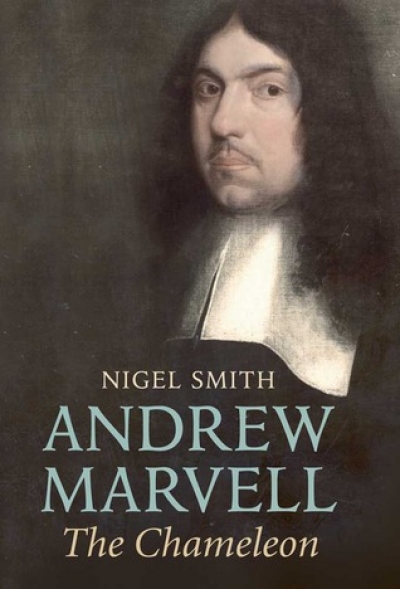Biography
Marion Mahony (1870–1961) was that rare commodity in late nineteenth-century American society: a woman functioning as an equal in a professional world dominated by men. Born to progressive parents, and a household and wider circle of strong and socially engaged women, Marion Lucy Mahony was only the second woman to graduate from an American university (Massachusetts Institute of Technology, 1894) with a full degree in architecture, and the first to be licensed to practise under any state regulatory structure anywhere in the world (Illinois, 1898).
... (read more)Images of the Interior: Seven Central Australian Photographers by Philip Jones
One section on Australian photography slowly growing on my bookshelves is devoted to anthropological and ethnographic photography. Philip Jones’s latest book, Images of the Interior: Seven Central Australian Photographers, belongs there because of the amount of anthropological material it contains. But it could also take its place among books devoted to vernacular photography, because none of the seven photographers Jones has selected was professionally trained. All were keen amateur photographers who produced substantial bodies of work during the time they lived and worked in Central Australia. The book deals with an epoch of dramatic change, beginning in the 1890s with some of the earliest European photographs of the Centre, and concluding in the 1940s.
... (read more)John Gielgud: Matinee Idol to Movie Star by Jonathan Croall
As the dust settles on twentieth-century acting giants, and reputations are appraised, it is at least arguable that John Gielgud emerges as the greatest. Certainly his was the longest and most varied career, spanning nearly eighty years, only death itself, when he was ninety-six, causing him to slow down. Since then his pre-eminence has seemed confirmed as one reads about him and his distinguished contemporaries.
... (read more)There are only seven High Court judges. Since Federation there have been just fifty-six of them (or fifty-five if we discount Justice Piddington, who never sat during his four weeks on the court). High Court judges are rare creatures, and as a rule they are publicly noticed far less than the importance of their work might suggest.
...Modern travellers can hardly conceive the perils of the sea in the age of sail. Merchant seamen excepted, today’s average seafarer rides a massive cruise ship warned by radar to skirt round storms and stabilised against the rolling of all but the most powerful swells. The terrors of the deep do not extend far beyond poor maintenance, food poisoning, bad company, and illicit drugs administered by persons of interest to the police. Global positioning devices make navigation a breeze. Fifteen-year-old girls single-handedly circumnavigate the globe, and Antarctica is a fun destination for seniors.
... (read more)Literary biography is an often derided genre. Writers, in particular, tend to be suspicious, if not openly hostile, toward what they are apt to regard as a secondary or parasitic form. And there are valid reasons for this wariness. The assumption behind a biography is, reasonably enough, that the writer’s life informs the work, but establishing the precise relevance of the life to the work is a treacherous business. Because it is possible to argue that anything a creative writer experiences is at least potentially significant, there is no obvious line between a legitimate and a trivial, or even a prurient, interest in the details of a writer’s personal life.
... (read more)In 1629, Charles I of England sent Daniel Nys to Europe to buy art. Along with works by Titian and Rubens, Nys bought Mantegna’s masterpiece, The Triumphs of Caesar (1486–92). This work on nine large panels is at once sombre and full of wonders. Of its time the most accurate representation of Roman customs and costumes, it is also a work in which precision has a strange effect, almost of tenderness. Still hung at Hampton Court, it was one of only a few works that Cromwell kept after the regicide.
... (read more)In the autumn of 1962, as a student in Paris, I went to watch Edith Piaf perform atop the Eiffel Tower. My memory is of being in a thick crowd at ground level, straining to see a tiny floodlit figure while a huge metallic voice resounded across the night sky: ‘Non, je ne regrette rien …’ In this new biography of Piaf, Carolyn Burke reminds us that this was a publicity event for the launch of Daryl Zanuck’s film about D-Day, The Longest Day. Piaf, at forty-six, her health ruined, had only a year to live, but still managed to overcome her frailty and her fear of heights to project her whole being into the iconic image that the world had of her.
... (read more)Wolfgang Sievers was a complex person with a clear vision. The major dimensions of his life included photography and an abiding sense of the dignity of man. Helen Ennis, one of the foremost authorities on Sievers, has produced a book that is at once satisfying and teasing.
... (read more)Out of Time: The Vexed Life of Georg Tintner by Tanya Buchdahl Tintner
A cluttered portrait inevitably diminishes its subject. I am thinking, in particular, of Archduke Leopold Wilhelm in his gallery in Brussels, by David Teniers the Younger, in which the Habsburg aristocrat is like an ant among his scores of pictures. This happens with biographies, too. A satisfying example is far more than an expansion of the subject’s curriculum vitae or a thorough examination of his appointment diary. When the author has strong feelings (as a widow inevitably does), the problem is aggravated. This new biography – of an extraordinary musician who might, in different circumstances, have contributed far more to Australia than he was allowed to do – is both partisan and prolix, and is as littered with quotidian details as the Teniers painting is with canvases. In both cases, these objects and details are too small to engage our attention usefully or thoroughly.
... (read more)










